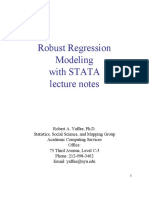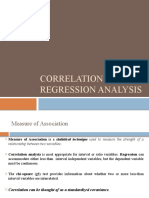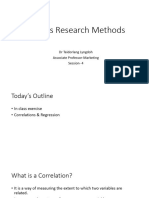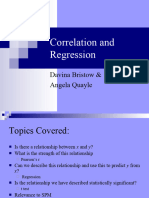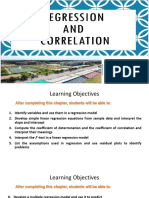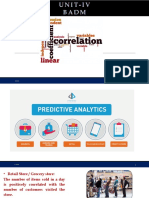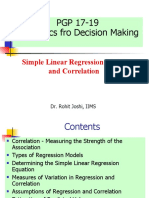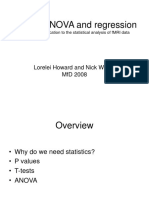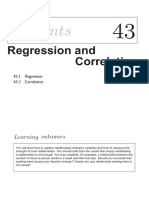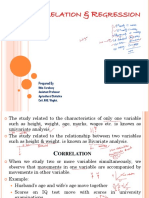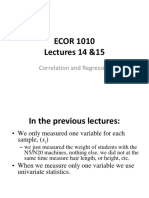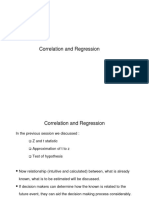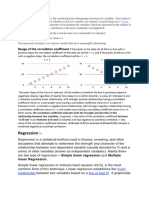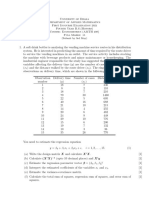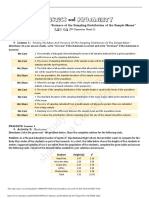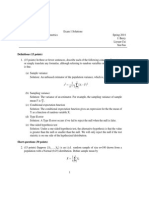0% found this document useful (0 votes)
20 views21 pagesLecture7b Session
The lecture discusses correlation and regression analysis, emphasizing their importance in understanding relationships within vast data sets. It explains the differences between correlation, which summarizes direct relationships, and regression, which predicts behavior and can demonstrate cause and effect. The document also covers mathematical foundations, covariance, correlation coefficients, and the interpretation of regression equations.
Uploaded by
AlanCopyright
© © All Rights Reserved
We take content rights seriously. If you suspect this is your content, claim it here.
Available Formats
Download as PDF, TXT or read online on Scribd
0% found this document useful (0 votes)
20 views21 pagesLecture7b Session
The lecture discusses correlation and regression analysis, emphasizing their importance in understanding relationships within vast data sets. It explains the differences between correlation, which summarizes direct relationships, and regression, which predicts behavior and can demonstrate cause and effect. The document also covers mathematical foundations, covariance, correlation coefficients, and the interpretation of regression equations.
Uploaded by
AlanCopyright
© © All Rights Reserved
We take content rights seriously. If you suspect this is your content, claim it here.
Available Formats
Download as PDF, TXT or read online on Scribd
/ 21

